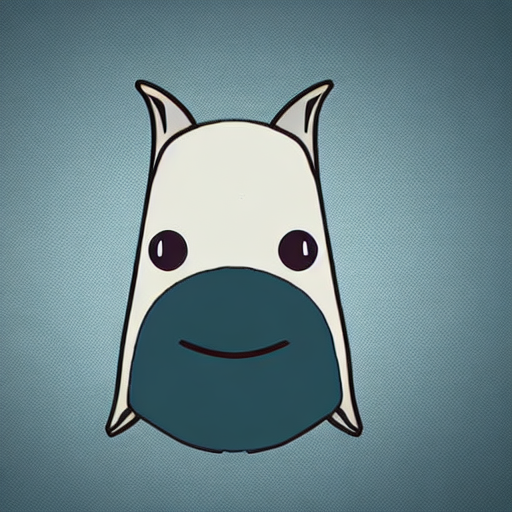Laravel: Difference between revisions
| (One intermediate revision by the same user not shown) | |||
| Line 2: | Line 2: | ||
One of the best parts of Laravel is their excellent video course on web development. | One of the best parts of Laravel is their excellent video course on web development. | ||
The course is published on Laracasts. | The course is published on Laracasts. | ||
==Usage== | ==Usage== | ||
| Line 122: | Line 117: | ||
Point your webserver with PHP to the public folder.<br> | Point your webserver with PHP to the public folder.<br> | ||
If your application is publically accessible, make sure APP_DEBUG is set to false. | If your application is publically accessible, make sure APP_DEBUG is set to false. | ||
===Docker=== | |||
See the example Dockerfile below: | |||
<syntaxhighlight lang="Dockerfile"> | |||
# Dockerfile | |||
FROM php:8.1-apache | |||
RUN apt-get update && \ | |||
apt-get install -y nodejs npm zip libpq-dev sudo && \ | |||
a2enmod rewrite | |||
COPY --from=composer:latest /usr/bin/composer /usr/local/bin/composer | |||
ENV APACHE_DOCUMENT_ROOT /var/www/html/public | |||
RUN sed -ri -e 's!/var/www/html!${APACHE_DOCUMENT_ROOT}!g' /etc/apache2/sites-available/*.conf | |||
RUN sed -ri -e 's!/var/www/!${APACHE_DOCUMENT_ROOT}!g' /etc/apache2/apache2.conf /etc/apache2/conf-available/*.conf | |||
RUN sed -i 's#AllowOverride [Nn]one#AllowOverride All#' /etc/apache2/apache2.conf | |||
RUN mv "$PHP_INI_DIR/php.ini-production" "$PHP_INI_DIR/php.ini" | |||
# RUN sed -i 's#upload_max_filesize = 2M#upload_max_filesize = 200M#' "$PHP_INI_DIR/php.ini" | |||
# RUN sed -i 's#post_max_size = 8M#post_max_size = 200M#' "$PHP_INI_DIR/php.ini" | |||
RUN chown www-data:www-data /var/www -R | |||
ADD package.json package-lock.json /var/www/html/ | |||
RUN sudo -u www-data npm ci | |||
ADD composer.json composer.lock artisan /var/www/html/ | |||
ADD app /var/www/html/app | |||
ADD config /var/www/html/config | |||
ADD database /var/www/html/database | |||
ADD bootstrap /var/www/html/bootstrap | |||
ADD routes /var/www/html/routes | |||
RUN composer install | |||
# Add remaining files | |||
ADD . /var/www/html/ | |||
RUN cp .env.prod.example .env | |||
RUN chmod 775 /root && \ | |||
chown www-data:www-data -R /var/www/html && \ | |||
npm run prod | |||
</syntaxhighlight> | |||
==Security== | ==Security== | ||
Latest revision as of 17:05, 15 December 2022
Laravel is a popular MVC framework for PHP.
One of the best parts of Laravel is their excellent video course on web development.
The course is published on Laracasts.
Usage
Installation
composer global require laravel/installer
Creating a new project
Run the following commands.
Initialize a laravel project then cd into your project folder and install all php and node dependencies.
Then point your webserver to your project's public folder or run php artisan serve to start a local development server.
laravel new my-project
# Equivalent to
# composer create-project --prefer-dist laravel/laravel my-project
cd my-project
composer install
npm install
Copying an existing project
After you git pull an existing project, you will need to do the following to get it running.
Note: The app key is used for encrypting cookies.
Users will lose their session if the app key is regenerated in production.
composer install
npm ci
cp .env.example .env
# Fill in the .env config variables such as database, mail server, API keys, ...
php artisan key:generate
# Use npm run prod for production
npm run dev
Blade
Components
- Note: Components were completely revamped in Laravel 7.
If you don't know anything watch Blade Component Cookbook or read the Blade Templates.
Components in Laravel 7 have two parts:
- A php script in
app/View/Components. E.g.MyComponent.php - A blade template in
resources/views/components. E.g.my-component.blade.php
To get started, run:
php artisan make:component Alert
Controllers
Documentation
Controllers handle requests. The route file associates entry points with controller methods.
To make a controller, run php artisan make:controller <name of controller>.
Add the -r flag to automatically add REST methods.
Routing
Routing is handled in the routes/web.php file.
Documentation
RESTful
Note that for put, patch, delete you will need @method('PATCH') in your form html element.
Or you can use an ajax request via fetch or jQuery.
Route::get($uri, $callback);
Route::post($uri, $callback);
Route::put($uri, $callback);
Route::patch($uri, $callback);
Route::delete($uri, $callback);
Route::options($uri, $callback);
Theses can also be simplified with a single Route::resource($uri, $className); for a resource controller
Parameters/Variables
Route::get('user/{id}', function ($id) {
return 'User '.$id;
});
Database
Query Builder
- From subquery
$subquery = DB::connection('bayarea')->table(DB::raw("restaurants x, parking y"))
->select("x.id as id1", "y.id as id2")->where("x.id", "=", $restaurant_id);
$mainquery = DB::connection('bayarea')->table(DB::raw("({$subquery->toSql()}) as t1"))->mergeBindings($subquery)->...->get();
Laravel Mix
Laravel mix is an asset compiler/minifier for Laravel which uses webpack.
Your configuration will be in webpack.mix.js
The following may be convenient:
const fs = require('fs-extra');
class Rm {
name() {
return "rm";
}
register(to) {
fs.removeSync(to);
}
}
mix.extend('rm', new Rm());
JavaScript
Passing variables from PHP to JavaScript
Variables can be passed from PHP to JS using view replacement. Note that while your JS is typically separate from your view, you will need to include some JS in your view to use this feature.
Example.
Deployment
Directly
Point your webserver with PHP to the public folder.
If your application is publically accessible, make sure APP_DEBUG is set to false.
Docker
See the example Dockerfile below:
# Dockerfile
FROM php:8.1-apache
RUN apt-get update && \
apt-get install -y nodejs npm zip libpq-dev sudo && \
a2enmod rewrite
COPY --from=composer:latest /usr/bin/composer /usr/local/bin/composer
ENV APACHE_DOCUMENT_ROOT /var/www/html/public
RUN sed -ri -e 's!/var/www/html!${APACHE_DOCUMENT_ROOT}!g' /etc/apache2/sites-available/*.conf
RUN sed -ri -e 's!/var/www/!${APACHE_DOCUMENT_ROOT}!g' /etc/apache2/apache2.conf /etc/apache2/conf-available/*.conf
RUN sed -i 's#AllowOverride [Nn]one#AllowOverride All#' /etc/apache2/apache2.conf
RUN mv "$PHP_INI_DIR/php.ini-production" "$PHP_INI_DIR/php.ini"
# RUN sed -i 's#upload_max_filesize = 2M#upload_max_filesize = 200M#' "$PHP_INI_DIR/php.ini"
# RUN sed -i 's#post_max_size = 8M#post_max_size = 200M#' "$PHP_INI_DIR/php.ini"
RUN chown www-data:www-data /var/www -R
ADD package.json package-lock.json /var/www/html/
RUN sudo -u www-data npm ci
ADD composer.json composer.lock artisan /var/www/html/
ADD app /var/www/html/app
ADD config /var/www/html/config
ADD database /var/www/html/database
ADD bootstrap /var/www/html/bootstrap
ADD routes /var/www/html/routes
RUN composer install
# Add remaining files
ADD . /var/www/html/
RUN cp .env.prod.example .env
RUN chmod 775 /root && \
chown www-data:www-data -R /var/www/html && \
npm run prod
Security
Vulnerabilities
- CVE-2021-3129 - In Laravel < 8.4.2, leaving debug mode on can lead to remote execution.
